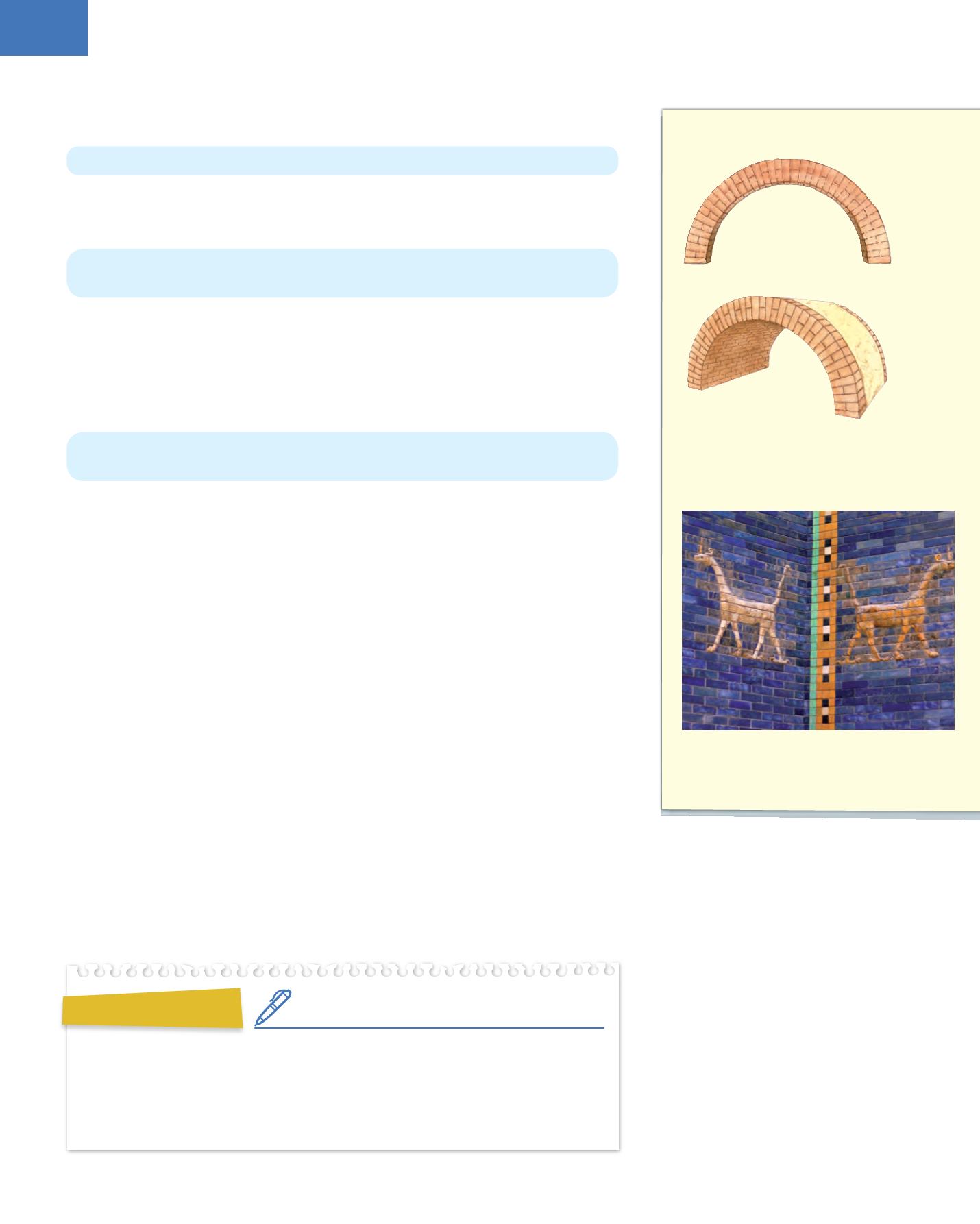
3
52
History
2.3. Mesopotamian culture and religion
They performed complex mathematical calculations and invented the
sexagesimal
14
system
. They also created a calendar based on the cycles of the moon.
They depicted their gods with human forms and associated them with the forces of
nature. When Babylon became the most important city, its god,
Marduk
, became the
main deity
15
.
2.4. Mesopotamian art
❚
A
brick
is a piece of clay baked in an oven. Although it was not very strong, it
was used as the main building material, as there was very little stone.
Glazed
ceramics
or
tiles
16
were used to decorate the brick walls.
❚
A
semicircular arch
is a semicircular structure with a supporting point at each
end.
❚
A
vault
is a roof in the form of an arch.
The main
sacred building
was the
ziggurat
. These buildings were composed of
several levels of brick terraces in the form of a step pyramid. The
processions
(groups
of worshippers) climbed the flights of stairs to the
sanctuary
, which was situated
in the highest terrace and contained the statue of a god or goddess. The ziggurats
mainly had a religious function, but also economic and political.
The most important
civil building
(non-religious) was the
palace
. It had many rooms
and was the residence of the kings and their attendants.
There are three types of Mesopotamian
sculpture
:
❚
Reliefs
: sculptures which protrude from a surface (on walls and doors).
❚
Steles
: commemorative reliefs on vertical stone.
❚
Freestanding sculptures
(not part of another surface): these usually represented
gods or governors in prayer or contemplation.
Did you know?
The
Epic of Gilgamesh
is the first great work of literature in history. It tells the
story of how Enlil, the god of heaven, caused a great flood in order to eliminate
humanity when the population became too large. The god Ea then ordered
Utnapishtim to build an ark (a giant ship) to save his family and all other living
creatures in order to repopulate the Earth.
14
sexagesimal:
system of numeration
in which every unit is divided into
60 smaller units; still used today for
measuring time and angles
15
deity:
god or goddess
16
tile:
flat piece of baked clay
The semicircular arch (1) and the
vault (2) are characteristic features of
Mesopotamian art
Detail of the glazed ceramic decoration
on the Ishtar Gate (PergamonMuseum,
Berlin)
1.
2.
The Mesopotamians made important
scientific advances
.
In Mesopotamia, religion was
polytheistic
, which means they believed in several
gods. They worshipped them in sacred buildings called
temples
.
Mesopotamian
architecture
is characterised by the use of bricks, semicircular
arches and vaults.


